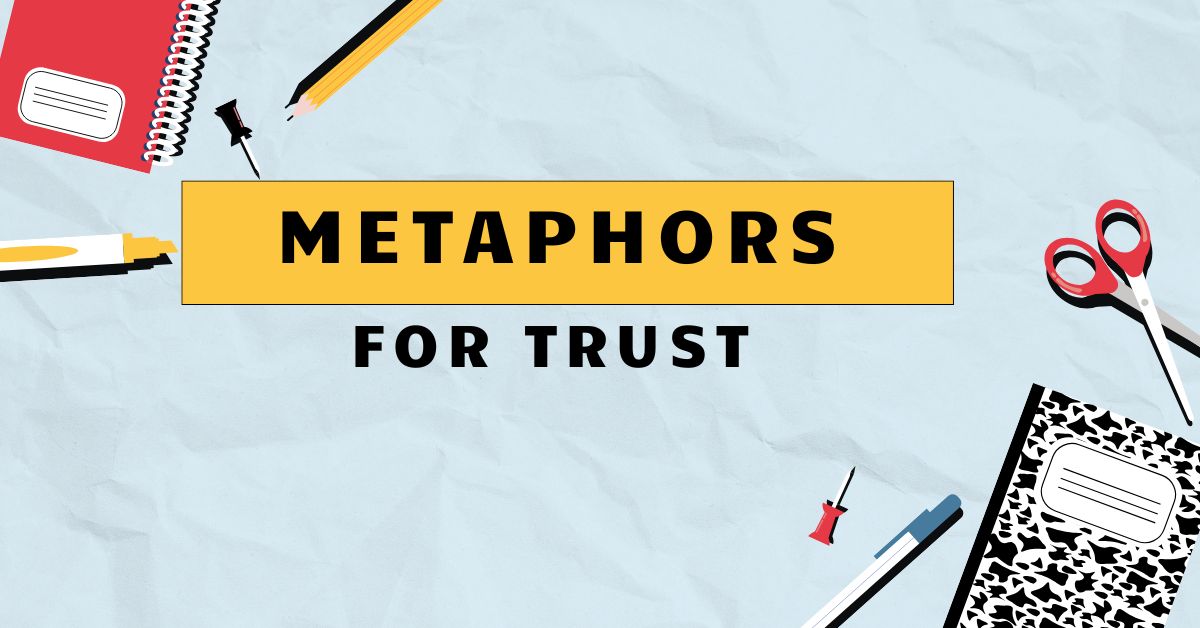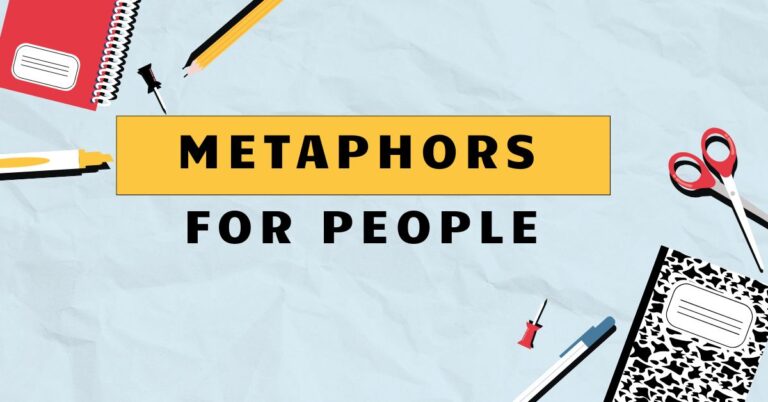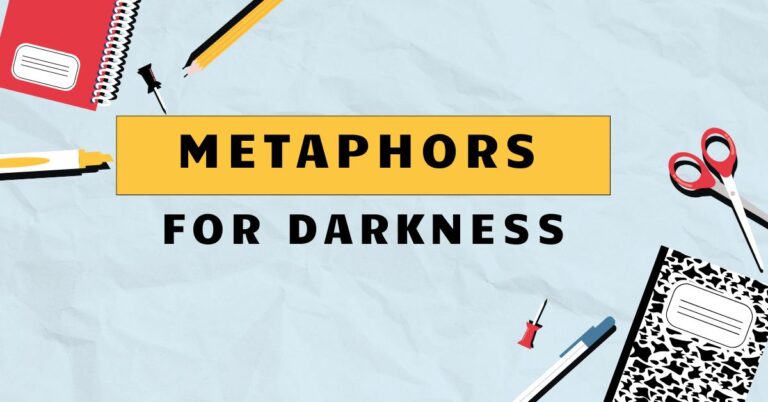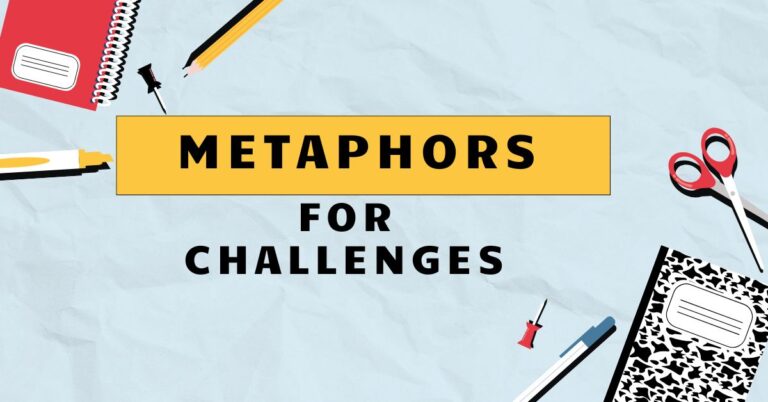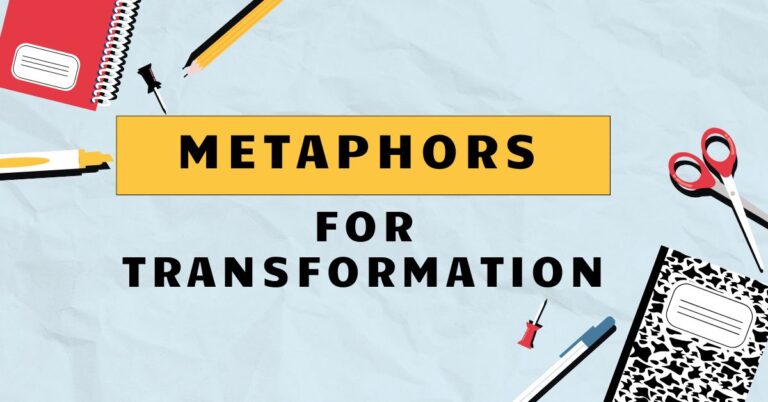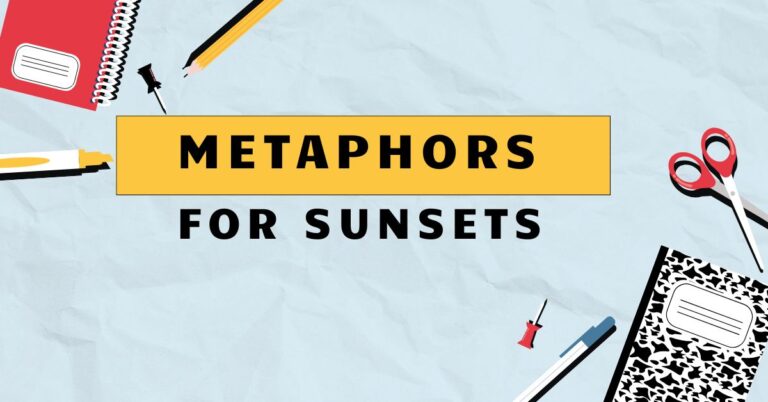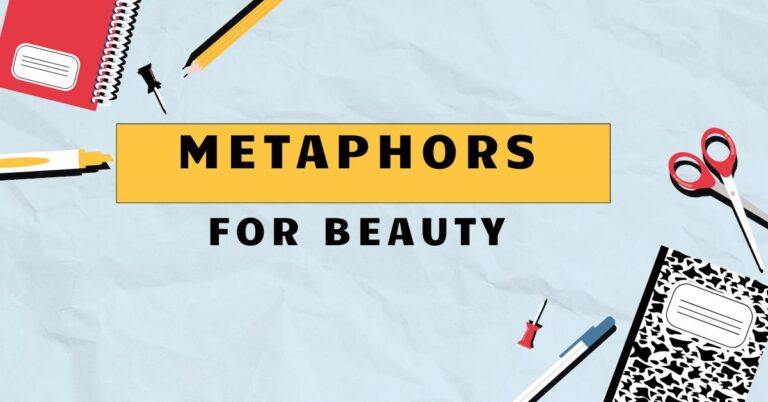43 Trust Metaphors: Understanding Figurative Language in Relationships
Trust is a cornerstone of human relationships, yet it can be challenging to articulate. Metaphors serve as powerful tools to express the abstract concept of trust in tangible and relatable ways.
Understanding these metaphors enhances our ability to communicate, interpret, and build stronger connections. This article delves into the various metaphors for trust, exploring their meanings, structures, and applications.
This guide is designed for English language learners, writers, and anyone interested in improving their communication skills by mastering figurative language.
Table of Contents
- Introduction
- Definition of Metaphor for Trust
- Structural Breakdown
- Types and Categories of Trust Metaphors
- Examples of Trust Metaphors
- Usage Rules
- Common Mistakes
- Practice Exercises
- Advanced Topics
- FAQ
- Conclusion
Introduction
Trust is an essential element in all human interactions, from personal relationships to professional collaborations. Because it is an abstract concept, people often rely on metaphors to express its nuances and complexities.
Metaphors transform trust into something more tangible and relatable, allowing for deeper understanding and more effective communication. By mastering metaphors for trust, you can enrich your writing, improve your interpersonal skills, and gain a more profound appreciation for the dynamics of human connection.
This comprehensive guide provides a detailed exploration of trust metaphors, covering their definitions, structures, types, and practical applications. Through extensive examples, usage rules, and practice exercises, you will develop a strong command of this powerful linguistic tool.
Whether you are an English language learner, a seasoned writer, or simply someone interested in enhancing your communication skills, this article will equip you with the knowledge and skills to use trust metaphors effectively.
Definition of Metaphor for Trust
Ametaphor for trustis a figure of speech that describes trust by comparing it to something else, highlighting shared characteristics or qualities. Unlike similes, which use “like” or “as” to make comparisons, metaphors directly equate trust with the other object or concept.
This comparison is not literal but imaginative, designed to evoke a deeper understanding and emotional resonance. The use of metaphor allows us to grasp the complexities of trust in a more intuitive way.
Metaphors for trust function in several ways. Firstly, they provide a concrete image or idea to represent an abstract concept, making it easier to comprehend.
Secondly, they add emotional depth and nuance to the communication, allowing the speaker or writer to convey their feelings and attitudes towards trust. Thirdly, they can be persuasive, influencing the audience’s perception of trust and its importance.
The context in which a metaphor is used significantly affects its interpretation and impact.
Consider the statement “Trust is the bridge between us.” Here, trust is not literally a bridge, but the metaphor suggests that it connects people, facilitates communication, and allows for mutual understanding, just as a physical bridge connects two locations. This metaphor provides a vivid and accessible way to understand the role of trust in relationships.
Understanding the function of metaphors is crucial to interpreting the intended meaning and emotional weight of the speaker’s message.
Structural Breakdown
The structure of a metaphor typically involves two main elements: thetenorand thevehicle. The tenor is the subject being described (in this case, trust), and the vehicle is the object or concept to which it is being compared.
The connection between the tenor and the vehicle is not arbitrary; it is based on shared qualities or characteristics that create a meaningful comparison. Understanding this structure is essential for both creating and interpreting metaphors effectively.
For example, in the metaphor “Trust is a fragile vase,” the tenor is trust, and the vehicle is a fragile vase. The shared quality is fragility: both trust and a fragile vase can be easily broken or damaged.
The metaphor implies that trust requires careful handling and protection. Recognizing the tenor and vehicle helps to unpack the meaning and implications of the metaphor.
The effectiveness of a metaphor depends on the clarity and relevance of the connection between the tenor and the vehicle.
Metaphors can also have underlying implications orgroundsthat further enrich their meaning. The grounds are the specific aspects or qualities that link the tenor and the vehicle.
In the “fragile vase” example, the grounds include vulnerability, the need for care, and the potential for irreparable damage. Identifying the grounds allows for a more nuanced understanding of the metaphor’s message.
Skilled communicators use metaphors with carefully chosen grounds to convey specific ideas and emotions related to trust.
Types and Categories of Trust Metaphors
Trust metaphors can be categorized based on the types of images or concepts used to represent trust. These categories include trust as a foundation, a journey, a container, a fragile object, and a currency.
Each category offers a unique perspective on trust, highlighting different aspects of its nature and function. Understanding these categories can help you choose the most appropriate metaphor for a given situation and audience.
Trust as a Foundation
This category of metaphors portrays trust as the basis upon which relationships, organizations, or societies are built. The image of a foundation suggests stability, support, and long-term strength.
Without a solid foundation of trust, these structures are vulnerable to collapse. Examples include: “Trust is the bedrock of our partnership,” and “A strong foundation of trust is essential for any successful team.” These metaphors emphasize the fundamental importance of trust in creating lasting and resilient relationships.
These metaphors often evoke a sense of security and reliability. Just as a building cannot stand without a strong foundation, relationships and organizations cannot thrive without trust.
The metaphor of trust as a foundation underscores the need to invest in building and maintaining trust over time. It suggests that any cracks or weaknesses in the foundation of trust can have serious consequences for the entire structure.
Trust as a Journey
These metaphors depict trust as a process or path that requires time, effort, and commitment. The image of a journey suggests progress, challenges, and potential setbacks.
Building trust is not a one-time event but an ongoing process of mutual understanding and cooperation. Examples include: “Building trust is a long road,” and “We are on a journey of trust.” These metaphors emphasize the dynamic and evolving nature of trust.
Journey metaphors often highlight the importance of perseverance and resilience in building trust. Just as a traveler may encounter obstacles along the way, individuals and organizations may face challenges that test their trust.
The metaphor suggests that overcoming these challenges can strengthen trust and deepen relationships. It also acknowledges that trust can be lost or damaged along the journey, requiring repair and rebuilding.
Trust as a Container
This category of metaphors represents trust as something that can hold or contain emotions, secrets, or confidences. The image of a container suggests security, protection, and confidentiality.
Trustworthy individuals or organizations are seen as safe places to share sensitive information or vulnerable feelings. Examples include: “He is a vault of trust,” and “Our relationship is a vessel of trust.” These metaphors emphasize the role of trust in creating safe and supportive environments.
Container metaphors often highlight the importance of keeping trust secure and protected. Just as a container can be breached or emptied, trust can be violated or betrayed.
The metaphor suggests that individuals and organizations have a responsibility to safeguard the trust that is placed in them. It also implies that once trust is lost, it can be difficult or impossible to recover.
The capacity of the container also implies the depth of the trust.
Trust as a Fragile Object
These metaphors portray trust as delicate and easily broken. The image of a fragile object, such as glass or a vase, suggests vulnerability and the need for careful handling.
Even small actions or words can damage or destroy trust. Examples include: “Trust is like a delicate flower,” and “Our trust is a pane of glass.” These metaphors emphasize the importance of being mindful and respectful in interactions.
Fragility metaphors often highlight the consequences of betrayal or broken promises. Just as a shattered vase cannot be easily repaired, broken trust can be difficult or impossible to restore.
The metaphor suggests that prevention is better than cure, and that individuals and organizations should take steps to protect trust from being damaged. It also serves as a warning against actions that could undermine trust.
Trust as a Currency
This category of metaphors describes trust as a valuable asset that can be earned, spent, and invested. The image of currency suggests that trust has worth and can be used to facilitate transactions, build relationships, and achieve goals.
Examples include: “Trust is our most valuable capital,” and “We need to invest in trust.” These metaphors emphasize the economic and strategic importance of trust.
Currency metaphors often highlight the importance of building and maintaining a positive “trust balance.” Just as individuals and organizations need to manage their finances carefully, they also need to cultivate and protect their reputation for trustworthiness. The metaphor suggests that trust can be depleted through negative actions or broken promises, and that it needs to be replenished through consistent and ethical behavior.
A good reputation can be seen as a bank account of trust.
Examples of Trust Metaphors
The following tables provide extensive examples of trust metaphors, organized by category. Each example illustrates how trust can be compared to different objects, concepts, or experiences to convey its meaning and importance.
These examples can serve as inspiration for your own writing and communication.
The following table showcases examples of how trust can be understood as a foundation upon which relationships and institutions are built.
| Metaphor | Explanation |
|---|---|
| Trust is the bedrock of our partnership. | Trust forms the stable base for the relationship. |
| A strong foundation of trust is essential for any successful team. | Trust provides the necessary support for team success. |
| Trust is the cornerstone of our society. | Trust is a fundamental element holding society together. |
| Our relationship is built on a solid foundation of trust. | The relationship is stable and secure due to trust. |
| Trust is the cement that binds our community together. | Trust strengthens the bonds within the community. |
| Without trust, the entire structure collapses. | Lack of trust leads to failure and disintegration. |
| Trust is the root of our collaboration. | Trust is the origin and basis of the collaborative effort. |
| The company’s success is grounded in trust. | The company’s achievements are based on trust. |
| Trust is the base upon which we build our future. | Trust is the starting point for future endeavors. |
| Our agreement rests on a foundation of mutual trust. | The agreement is supported by shared trust. |
| Trust is the anchor that keeps our friendship steady. | Trust provides stability and security to the friendship. |
| A lack of trust can erode the foundation of any relationship. | Absence of trust weakens and destroys relationships. |
| Trust is the scaffolding that supports our project. | Trust provides temporary support for the project’s development. |
| The stability of our government depends on public trust. | The government’s strength relies on the trust of the citizens. |
| Trust is the load-bearing wall of our family. | Trust is a critical support structure within the family. |
| The business was built on a foundation of customer trust. | The business’s success is due to customer trust. |
| Trust is the footing that stabilizes our partnership. | Trust provides a firm base for the partnership. |
| Our alliance is only as strong as the trust between us. | The strength of the alliance is directly proportional to the trust. |
| Trust is the undergirding that supports our organization. | Trust provides essential support to the organization’s structure. |
| Without trust, the entire enterprise is on shaky ground. | Lack of trust endangers the entire undertaking. |
| Trust is the bedrock of a healthy democracy. | Trust forms the stable base for democratic governance. |
| The community’s resilience is rooted in strong social trust. | The community’s ability to recover is based on trust. |
| Trust is the foundation upon which we build our dreams. | Trust is the essential element to achieve our aspirations. |
The following table showcases examples of how trust can be understood as a journey, emphasizing its ongoing and evolving nature.
| Metaphor | Explanation |
|---|---|
| Building trust is a long road. | Establishing trust requires time and effort. |
| We are on a journey of trust. | We are in the process of developing trust. |
| The path to trust is not always easy. | Building trust involves facing challenges. |
| Trust is a bridge we must cross together. | Trust requires mutual effort and cooperation. |
| Our relationship is a journey of building trust. | The relationship is defined by the ongoing development of trust. |
| Trust is a winding road with many turns. | Building trust involves unpredictable circumstances. |
| We are navigating the waters of trust. | We are carefully managing the process of building trust. |
| The journey to trust requires patience and understanding. | Building trust demands patience and empathy. |
| Trust is a staircase we climb one step at a time. | Building trust is a gradual and progressive process. |
| We are walking a tightrope of trust. | We are in a precarious situation that requires careful balance. |
| Trust is a voyage we embark on together. | Trust involves a shared journey of discovery and commitment. |
| The road to trust is paved with honesty. | Honesty is essential for building trust. |
| Building trust is like climbing a mountain, one step at a time. | The process of building trust requires persistent effort and determination. |
| We are charting a course of trust in our partnership. | We are deliberately planning and guiding our partnership with trust. |
| Trust is a bridge that connects our past and future. | Trust links our history and aspirations. |
| We are on a pilgrimage of trust. | We are undertaking a meaningful and committed journey of building trust. |
| Trust is the compass that guides our decisions. | Trust provides direction and purpose for our actions. |
| The journey of trust is marked by milestones of reliability. | Progress in building trust is defined by consistent dependability. |
| We are traversing the landscape of trust. | We are exploring and navigating the complexities of trust. |
| Trust is the vehicle that carries our relationship forward. | Trust enables our relationship to progress and thrive. |
| Building trust is like a marathon, not a sprint. | Establishing trust requires sustained effort over a long period. |
| The path to trust is often uphill, but the view is worth it. | Building trust can be challenging, but the rewards are significant. |
| Trust is a journey that transforms us along the way. | The process of building trust changes us for the better. |
The following table showcases examples of how trust can be understood as a container, emphasizing its role in holding and protecting confidences.
| Metaphor | Explanation |
|---|---|
| He is a vault of trust. | He is a very trustworthy person who keeps secrets safe. |
| Our relationship is a vessel of trust. | The relationship holds and protects trust. |
| She is a container of confidences. | She can be trusted with sensitive information. |
| Trust is a safe harbor. | Trust provides security and protection. |
| Our friendship is a repository of trust. | The friendship is a place where trust is stored and valued. |
| He is a strongbox of secrets. | He keeps secrets securely and reliably. |
| Trust is a well that runs deep. | Trust is abundant and profound. |
| Our partnership is a reservoir of goodwill. | The partnership holds a large amount of positive trust. |
| He is a bulwark of reliability. | He is a strong and dependable source of trust. |
| Trust is a secure box for our feelings. | Trust provides a safe place to express emotions. |
| She is a guardian of trust. | She protects and defends trust. |
| Our team is a bastion of integrity. | The team is a strong and reliable source of trust. |
| He is a treasure chest of secrets. | He holds valuable and private information securely. |
| Trust is a sanctuary where we can be vulnerable. | Trust provides a safe space for vulnerability. |
| Our community is a haven of trust. | The community is a safe and supportive environment. |
| He is a fortress of discretion. | He maintains confidentiality and protects sensitive information. |
| Trust is a shield that protects our relationship. | Trust safeguards the relationship from harm. |
| Our organization is a lighthouse of integrity. | The organization provides guidance and trustworthiness. |
| He is a storehouse of wisdom and trust. | He possesses a wealth of knowledge and trustworthiness. |
| Trust is a secure room where we can share our fears. | Trust provides a safe space to express vulnerabilities. |
| She is a vessel of unwavering trust. | She consistently demonstrates trustworthiness. |
| Our bond is a crucible of trust, tested and strengthened over time. | The bond is a container where trust is refined through challenges. |
| He is a safe deposit box for my deepest secrets. | He securely holds my most private information. |
The following table showcases examples of how trust can be understood as a fragile object, emphasizing its vulnerability and the need for care.
| Metaphor | Explanation |
|---|---|
| Trust is like a delicate flower. | Trust is fragile and easily damaged. |
| Our trust is a pane of glass. | Trust is easily broken and difficult to repair. |
| Trust is a fragile egg. | Trust requires careful handling to avoid being broken. |
| Trust is a thin thread. | Trust is easily severed or broken. |
| Our relationship is a house of cards. | The relationship is unstable and easily collapsed. |
| Trust is a soap bubble. | Trust is beautiful but fleeting and easily burst. |
| He is walking on eggshells. | He is being very careful to avoid damaging trust. |
| Trust is a butterfly’s wing. | Trust is delicate and easily damaged by rough handling. |
| Our bond is a spiderweb. | The bond is intricate but easily broken. |
| Trust is a sugar sculpture. | Trust is beautiful but easily melted or broken. |
| She is handling trust like a precious gem. | She is treating trust with utmost care and respect. |
| Our agreement is a paper-thin promise. | The agreement is weak and easily broken. |
| Trust is like a raindrop on a summer leaf. | Trust is transient and easily lost. |
| We are skating on thin ice. | We are in a precarious situation where trust can easily be broken. |
| Trust is a dandelion in the wind. | Trust is easily scattered and lost. |
| Our reputation is a castle made of sand. | The reputation is impressive but easily destroyed. |
| Trust is a single match in a dark room. | Trust is precious but easily extinguished. |
| Our confidence is a delicate balance. | The confidence is easily disrupted. |
| Trust is a whisper in a crowded room. | Trust is subtle and easily drowned out. |
| Our hope is a fragile seedling. | The hope is tender and easily damaged. |
| Trust is like a sandcastle, beautiful but easily washed away. | Trust is aesthetically pleasing but easily destroyed by external forces. |
| The promise of trust is as delicate as a snowflake. | The promise of trust is unique and easily melted. |
| Trust is a rare orchid, needing constant care to flourish. | Trust is valuable and requires continuous attention. |
The following table showcases examples of how trust can be understood as a currency, emphasizing its value and the need to invest in it.
| Metaphor | Explanation |
|---|---|
| Trust is our most valuable capital. | Trust is a precious asset that drives success. |
| We need to invest in trust. | We must put effort and resources into building trust. |
| Trust is a currency that buys loyalty. | Trust earns and secures loyalty. |
| We are building a bank of trust. | We are accumulating trust over time. |
| Trust is the coin of the realm. | Trust is the most important and recognized value. |
| He has a wealth of trust. | He is highly trustworthy and respected. |
| Trust is a dividend of good behavior. | Trust is a reward for ethical actions. |
| We are cashing in on our trust. | We are benefiting from the trust we have earned. |
| Trust is a commodity in high demand. | Trust is valuable and sought after. |
| Our reputation is our trust portfolio. | Our reputation reflects our trustworthiness as an asset. |
| She is earning trust with every action. | She is gaining trust through consistent behavior. |
| Our word is our bond, our currency of trust. | Our promises are a reliable form of trust. |
| Trust is like gold, valuable and enduring. | Trust is precious and long-lasting. |
| We are leveraging our trust to expand our business. | We are using our trustworthiness to grow our company. |
| Trust is a fortune that we must protect. | Trust is a valuable asset that requires safeguarding. |
| Our credibility is the currency we trade in. | Our trustworthiness is our means of exchange. |
| Trust is a priceless inheritance. | Trust is a legacy that is highly valued. |
| Our reliability is our trust account. | Our dependability is where we store trust. |
| Trust is a social currency that enriches our interactions. | Trust enhances and improves social relationships. |
| Our integrity is the gold standard of trust. | Our integrity represents the highest level of trustworthiness. |
| Trust is a valuable asset that appreciates over time. | Trust increases in value with consistent maintenance and care. |
| Building trust is like investing in a high-yield account. | Establishing trust provides significant returns in the long run. |
| Trust is the currency of effective leadership. | Trust is essential for leaders to inspire and guide their teams. |
Usage Rules
When using metaphors for trust, it is essential to follow certain rules to ensure clarity, relevance, and impact. Firstly, the metaphor should be appropriate for the context and audience.
Consider the cultural background, knowledge, and expectations of your listeners or readers. A metaphor that resonates with one group may be confusing or offensive to another.
Choosing the right metaphor is crucial for effective communication.
Secondly, the connection between the tenor (trust) and the vehicle (the object or concept being compared) should be clear and logical. The shared qualities or characteristics should be easily recognizable and relevant to the message you are trying to convey.
Avoid metaphors that are too abstract or obscure, as they may confuse your audience. Clarity and relevance are key to the success of a metaphor.
Thirdly, be consistent with your metaphors. Avoid mixing metaphors within the same sentence or paragraph, as this can create confusion and undermine your credibility.
Choose a metaphor and stick with it throughout your communication. Consistency helps to reinforce your message and create a cohesive and compelling narrative.
Mixing metaphors can often be humorous, but it is generally best to avoid it in formal contexts.
Finally, use metaphors sparingly and strategically. Overusing metaphors can make your writing or speech sound artificial and contrived.
Choose the most impactful moments to deploy metaphors, and use them to emphasize key points or evoke strong emotions. Strategic use of metaphors can enhance your communication, while overuse can diminish its effectiveness.
Knowing when and how to use metaphors is a sign of linguistic sophistication.
Common Mistakes
One common mistake is usingclichéd metaphorsthat have lost their impact due to overuse. For example, “Trust is the foundation” is a common metaphor, but it may not be very effective because it is so familiar.
Instead, try to create fresh and original metaphors that capture the essence of trust in a new and compelling way. Originality can significantly enhance the impact of your communication.
Another mistake is usingmixed metaphors, which combine unrelated images or concepts in a confusing way. For example, “Trust is the bedrock of our partnership, but it can also be a fragile flower” mixes the foundation metaphor with the fragile object metaphor, creating a contradictory image.
Avoid mixing metaphors to maintain clarity and consistency. A clear and consistent metaphor is more effective than a confusing mix of images.
A third mistake is using metaphors that aretoo abstract or obscure. The connection between the tenor and the vehicle should be easily understood by your audience.
Avoid metaphors that require specialized knowledge or cultural understanding that your audience may not possess. The best metaphors are those that resonate with a wide range of people.
Make sure your audience can understand the connection between the metaphor and the concept of trust.
Finally, some people make the mistake of usingsimiles when a metaphor would be more effective. Similes use “like” or “as” to make comparisons, while metaphors directly equate the two concepts.
Metaphors are often more powerful and evocative than similes. Choose metaphors over similes when you want to create a stronger and more direct connection between trust and the other object or concept.
Similes can be useful, but metaphors often have greater impact.
Here are some examples of common mistakes and corrections:
| Incorrect | Correct | Explanation |
|---|---|---|
| Trust is the foundation, but it can also be a fragile flower. | Trust is the bedrock of our partnership. | Avoid mixing metaphors. Choose one consistent image. |
| Trust is like a bridge. | Trust is the bridge between us. | Use a metaphor for a stronger connection. |
| Trust is a green idea sleeping furiously. | Trust is a seed that needs nurturing. | Ensure the metaphor is clear and relatable. |
| Trust is the foundation (cliché). | Trust is the bedrock of our community. | Avoid overused metaphors. Find a fresh image. |
Practice Exercises
The following exercises will help you practice using metaphors for trust. For each question, choose the best metaphor to complete the sentence or rewrite the sentence using a metaphor for trust.
Exercise 1: Identifying Metaphors
| Question | Answer |
|---|---|
| 1. Trust is like a ______, connecting us despite our differences. | bridge |
| 2. A relationship without trust is like a ______ in the wind. | house of cards |
| 3. He guarded her secrets as if they were ______ in a vault. | gold |
| 4. Building trust is a ______ that requires patience and understanding. | journey |
| 5. Once broken, trust is like a ______ that can never be truly repaired. | vase |
| 6. In a crisis, trust is the ______ that holds a team together. | glue |
| 7. Trust is the ______ upon which successful partnerships are built. | foundation |
| 8. Her words were a ______ of trust, offering comfort and assurance. | balm |
| 9. He treated their relationship as if it were a ______, fragile and needing constant care. | sapling |
| 10. Building trust in a team is a ______ that needs continuous investment. | project |
Exercise 2: Completing Metaphors
| Question | Answer |
|---|---|
| 1. Trust is the _______ of our collaboration. | cornerstone |
| 2. Our relationship is a _______ of trust. | tapestry |
| 3. He is a _______ of discretion. | fortress |
| 4. Trust is a _______ that can either flourish or wither. | garden |
| 5. Our agreement is a _______ built on mutual respect. | castle |
| 6. Trust is a _______ that guides our decisions. | compass |
| 7. Their friendship is a _______ of shared experiences and confidences. | treasury |
| 8. He is a _______ of integrity and reliability. | beacon |
| 9. Trust is a _______ that binds our community together. | rope |
| 10. Building trust is a _______ that requires constant effort. | sculpture |
Exercise 3: Rewriting Sentences with Metaphors
| Original Sentence | Rewritten Sentence with Metaphor |
|---|---|
| 1. Trust is essential for a strong relationship. | Trust is the lifeblood of a strong relationship. |
| 2. It is easy to break trust. | Trust is a fragile vase, easily shattered. |
| 3. Building trust takes time and effort. | Building trust is a long and winding road. |
| 4. He is a trustworthy person. | He is a vault of trust. |
| 5. Their relationship is based on trust. | Trust is the bedrock of their relationship. |

